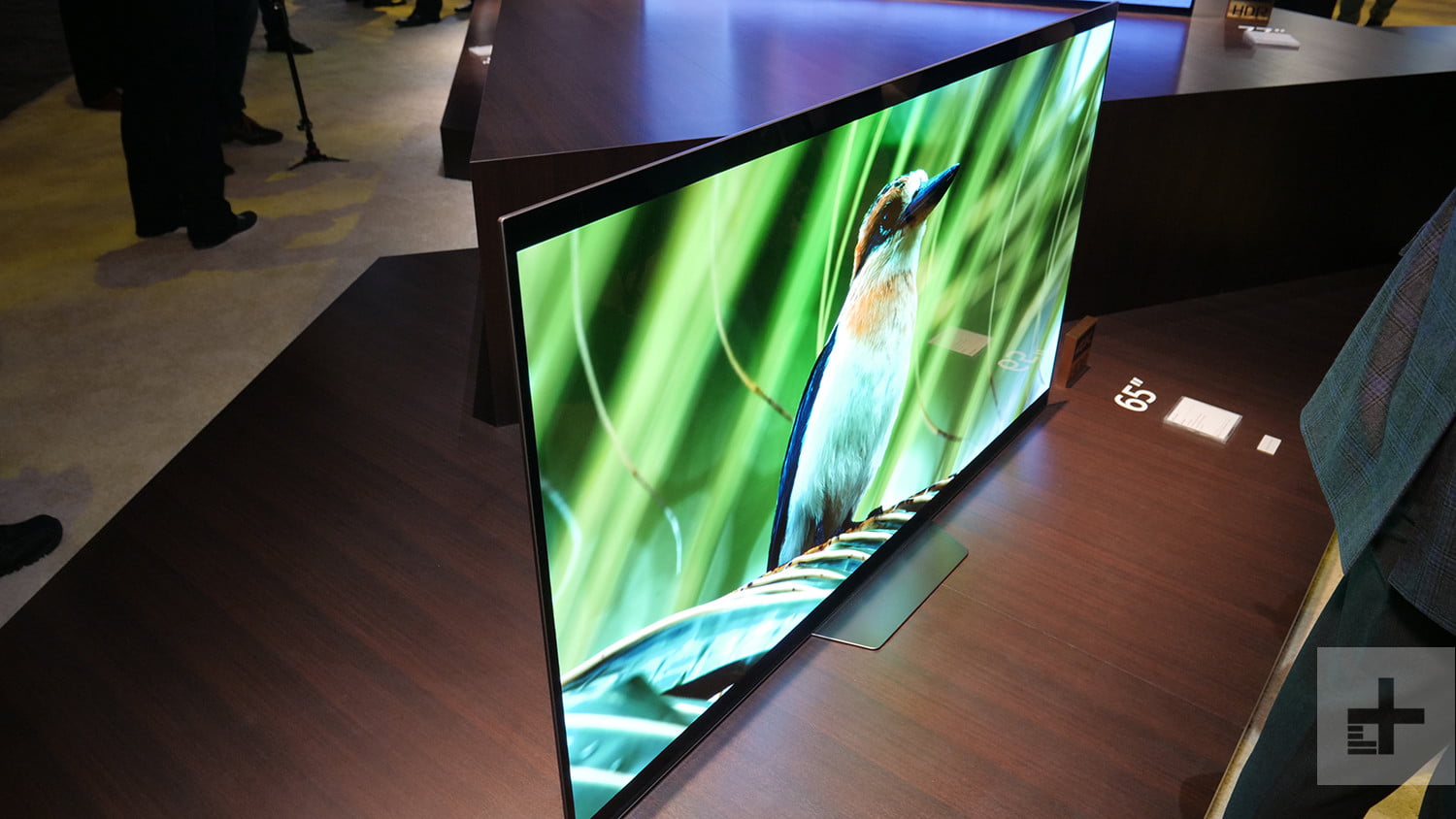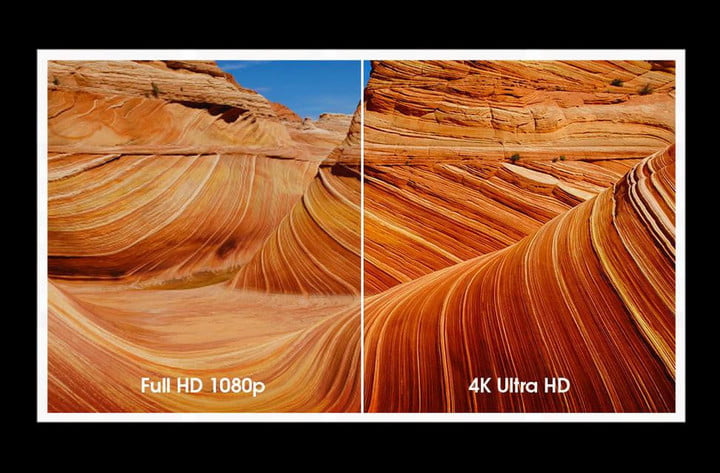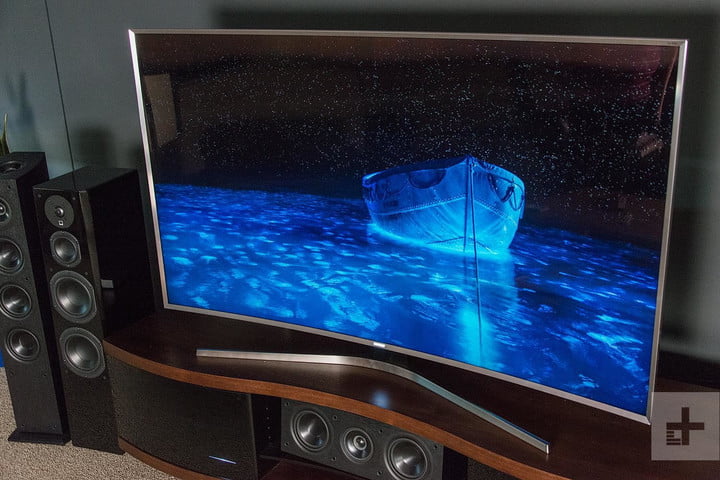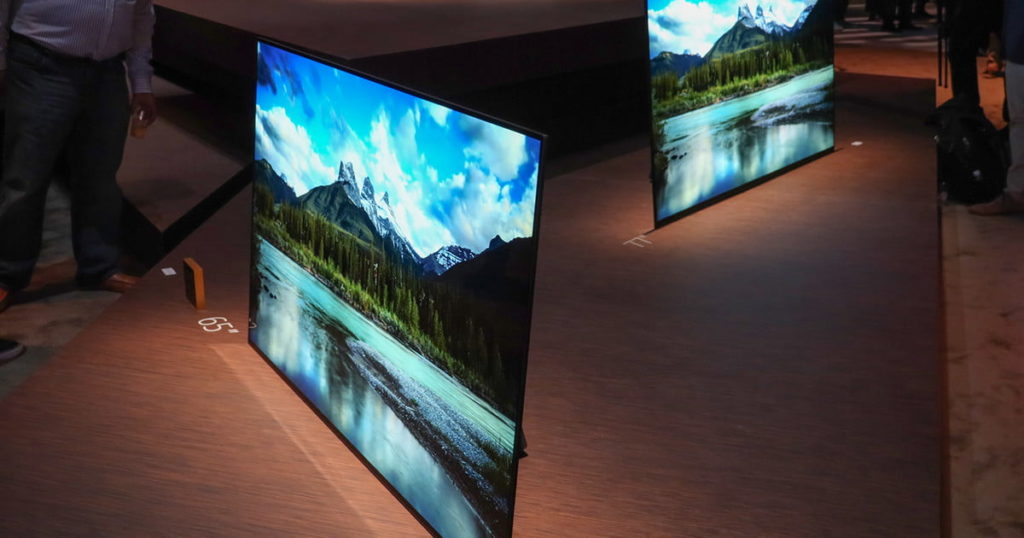Ultra HD 4K TV Guide: Everything You Need to Know

Not all that long ago, terms like 4K and Ultra HD seemed like cues to faraway technology fit only for first adopters with thick wallets. Flash forward a few years and Ultra HD has become the new standard. If you’re looking to buy a new TV, nearly every model 40 inches or larger these days features Ultra HD resolution. But what if you’re not sure you need a new TV? Is the higher resolution noticeably better? Is an even better technology on the horizon? We’re here to answer all those questions and more.
Is there a difference between 4K and UHD?
At the consumer level, no. The two terms are practically interchangeable. But talk to professionals in the video production or cinema industry and they’ll chew your ear off about how what we lowly consumers call 4K isn’t actually 4K at all. Technically, they’re right.
In the professional world, 4K is a digital cinema standard that calls for a 4096 x 2160 pixel resolution. That first number is a horizontal measurement, the latter vertical, and they work out because they fit a 1.85:1 aspect ratio. Looking at those numbers, it makes sense to use the term 4K, because the horizontal measurement is in the four thousand neighborhood and is double the prior 2K (2048 x 1080) standard.

Still with us? Good, because now we’re going to come back to consumer television land, where the vast majority of us live. Here, we watch televisions with a 16:9 or 1.78:1 aspect ratio. That’s not quite as wide as what the pros use, and the pixel resolution we get ends up being 3840 x 2160. This is double both the horizontal and vertical measurements of the 1920 x 1080 standard (1080p, AKA Full HD) that most of us use today. Do that math and that’s four times the pixel resolution. That’s why you’ll hear TV makers talking about how 4K Ultra HD is four times the resolution of Full HD (1080p).
In 2013, the Consumer Electronics Association (CEA) — now referred to as the Consumer Technology Association (CTA) — decided that, to end confusion and make marketing easier, Ultra HD should be the official name for the new resolution standard. Unfortunately, people have been calling it 4K for so long the name didn’t really stick. Some manufacturers, like Sony, insist on calling it 4K anyway, so for our purposes, consider them essentially synonymous.
Do I need Ultra HD?
One might as well ask: Do I need a Porterhouse steak? No, of course not! You can do just fine with a sirloin, can’t you? Likewise, your 1080p HDTV will still work years from now because 1080p digital broadcast standards aren’t going to disappear the way analog broadcasts did back in 2009. Still, you might be tempted to upgrade once you sit in front of a 4K Ultra HD set.
Basically, if you’re happy with your TV, there is no need to change what’s already working. On the other hand, if you’re shopping for a new TV, it’s time to take the leap to Ultra HD.
What is the benefit of Ultra HD?
The most immediately noticeable advantage is the higher pixel count. Ultra HD crams 8 million pixels into the same space in which a 1080p TV fits just 2 million pixels. It’s a noticeable upgrade, especially when watching native 4K content because the pixels are four times smaller and each one is getting a specific slice of the bigger picture. That, in part, is why Ultra HD makes more sense in larger screen sizes – the extra pixels have a bigger impact on a huge display.
Having more pixels on the screen doesn’t just mean a better picture on larger TVs, though. It also makes it more difficult to see individual pixels when you sit really close to any TV. So, snuggle up. It’s okay. While you’re there, you can take note of the fact that Ultra HD also offers a wider color gamut (adding literally millions of shades of extra color), greater bit depth, and with the majority of new TV sets, HDR. That last term is a whole rabbit hole unto itself, and we’ll talk more about it below. But let’s get back to Ultra HD.
Some experts debate the effectiveness of this higher resolution in screen sizes under 55-inches, and from typical viewing distances. We tend to agree that an Ultra HD screen has less of a payoff in smaller screen sizes for most people, but we’ve sat a 1080p TV down next to an Ultra HD TV for comparison, with the former playing a 1080p Blu-ray, and the latter playing an Ultra HD version of the same movie, and we’re here to tell you: The difference is visible at typical viewing distances.
What brands make the best Ultra HD TV?
While Ultra HD TVs were only available from some manufacturers a few years ago, that is no longer the case. You’ll still find 1080p TVs on sale — especially budget TVs — but as mentioned above, the vast majority of TVs that are average size or above are Ultra HD models. Of course, that doesn’t mean that every Ultra HD TV looks great, and you’re still better off sticking to models from bigger brands like Sony, LG, or Samsung. If you’re looking for performance at a lower price, Vizio offers a variety of inexpensive models with good picture quality for the price, while manufacturers like Hisense have also come a long way in terms of quality. TCL — a brand you may not have even heard of a few years ago — has also come a long way, making impressive looking 4K Roku TVs at a very affordable price point.
Can HDMI handle 4K video?
Yes, it can, but to take full advantage of some of Ultra HD’s capabilities, your HDMI connections must be the right version. The HDMI standard that many older appliances use is HDMI 1.4, and that standard can handle Ultra HD resolution content at up to 30 frames per second. But, in order to better take advantage of Ultra HD’s higher frame rate, color, and bit depth capabilities, HDMI 2.0 is necessary. Eventually, all HDMI 2.0 inputs and above (including the current standard HDMI 2.0b version) will require HDCP 2.2 (high definition copy protection) compliance as well.
With new HDMI versions coming out, it’s fair to ask whether you might need new HDMI cables. With the older HDMI 1.4 standard, the answer was no. But now that HDMI 2.0b shoves so much more information down the pipeline, it actually might be necessary to upgrade your cables. If you bought high-speed HDMI cables within the past couple of years, you’re probably going to be OK, but if you bought your HDMI cables several years ago, there’s a fair chance you will need to buy new cables. We have experienced signal dropouts and full-on cable failure in our own testing labs with cables we purchased just four years ago.
What about HDR? What is it, and do all Ultra HD TVs support it?
High Dynamic Range — commonly referred to as HDR — in TVs refers to multiple formats that provide brighter whites and darker blacks, making for increased color volume and shading and better contrast than standard displays. Many people (including us) say that HDR is a more noticeable upgrade than 4K resolution, and if you’re looking for a new reason to buy a TV, this is a great one.

Not all Ultra HD TVs support HDR, just like 4K itself, it’s becoming more and more common. There are also a few different varieties of HDR, including HDR10 (and its latest iteration, HDR10+) and Dolby Vision, the two most commonly used right now, as well as Hybrid Log Gamma, which is a broadcast-focused take that is starting to gain popularity. Not all TVs support every type of HDR, and not all HDR employment is of the same quality. The technology is still moving forward, so you’ll need to be aware of what you’re buying. Fortunately, we have an entire guide detailing HDR, which can help you shop for what you need to get the best picture quality possible for your money.
Can a 4K Ultra HD TV display standard or HD content? If so, what does it look like?
Yes, but like HDR and other features, not all TVs are created equal in this regard.
In order for an Ultra HD TV to display SD (standard definition) or HD (high definition) content, that content must first be upscaled. Ultra HD sets need to convert SD or HD content to Ultra HD resolution before it can be displayed – it’s gotta fill all those extra pixels with something, right?
Take note, however, that while most of the big-name manufacturers’ Ultra HD TVs do a solid job with upscaling, some budget brands do not. This is far less of an issue than it was a few years ago when this article was originally published, but it’s worth pointing out. Ultra HD 4K content is less scarce than it used to be, but the sheer amount of HD content out there makes a TV’s upscaling prowess a crucial consideration. If the TV does a bad job of upscaling, lower definition content will look significantly less impressive than on a 1080p TV that processes HD content natively and well.
That said, if your TV’s upscaling is less-than-perfect, many mid-range to higher-end A/V receivers also feature built-in 4K upscaling, as do 4K Ultra HD Blu-ray players. As such, if your TV’s upscaling chip isn’t top shelf, you may want to go into the settings of your A/V receiver (if it supports 4K Ultra HD upscaling) or your 4K Ultra HD Blu-ray player and do your upscaling from there. In that vein, if you’re getting a 4K Ultra HD TV, a 4K Ultra HD Blu-ray player (or even an Ultra HD Blu-ray compatible Xbox One X) is a good option to throw into the bundle.
Speaking of native Ultra HD content, where can I get it?
There are a growing number of streaming options available, including Netflix, Amazon Instant Video, and YouTube, but if you’re more of a physical media type of person (and enjoy the added performance quality they offer), the launch of Ultra HD Blu-ray in 2016 opened up a slew of choices. Brands like Samsung, Sony, Philips, LG, and Panasonic all have Ultra HD Blu-ray models. If you’re looking for advice, check out our list of the best Blu-ray players you can buy, and then head on over to the best 4K Blu-rays.

When it comes to live TV, you aren’t going to find 4K packages from your cable or satellite providers just yet. For the time being, 4K is mostly rolled out for special events like the Olympics or other sporting events. As for over-the-air broadcast television, Ultra HD isn’t yet available, though ATSC 3.0 next-generation broadcast standard is coming, and once it arrives, it will pave the way for 4K broadcasts.
Are there many Ultra HD streaming services?
Yes, and it goes well beyond the usual suspects mentioned above. In fact, streaming Ultra HD content is such a growth topic now, we’ve created an entire page for it here.
What about 8K? Is 4K Ultra HD about to become obsolete?
At a resolution of 7,680 × 4,320 (or 4,320p), 8K is four times the resolution of 4K Ultra HD and 16 times that of 1080p. It might seem mind-boggling to fathom, but it’s a technology that already exists, and manufacturers have already shown what they can do. In fact, Samsung has already released its first model available to the public for the low, low price of $15,000. We’ve been lucky enough to see the latest models, and they are pretty spectacular.
This does raise a question about Ultra HD’s long-term viability, raising fears that it could turn out to be a stepping stone to 8K, much like 720p was quickly overtaken by 1080p. Japan’s national broadcaster, NHK, has been pushing 8K, suggesting that H.265 compression is a major step in the right direction. NHK tested its first 8K broadcasts in August 2016, and is planning to show the 2020 Tokyo Olympic Games in 8K. For a deeper look, take a look at our guide to all you need to know about 8K.
That said, this doesn’t mean Ultra HD is on the way out already — far from it. We’ve had a long run of 1080p as the standard, and the challenges broadcasters and content creators have faced with Ultra HD are still being ironed out — and they’ll be problematic all over again when dealing with 8K. In other words, don’t worry about the 8K monster just yet — Ultra HD is still getting its feet under it, and we’ve still got a fair way to go before it’s the standard across the board. When it comes to technology that’s this ubiquitous in its integration, it’s good to take one leap at a time. Right now, 4K Ultra HD is still the resolution worthy of your investment.




